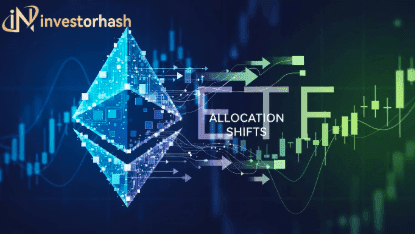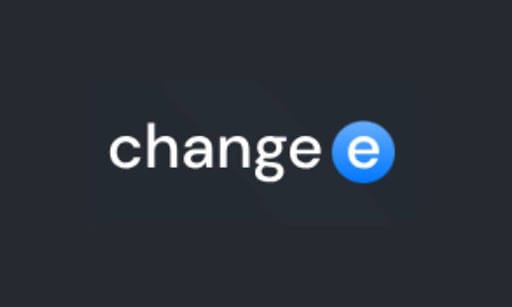What is BNB?
Cryptocurrencies have exploded in popularity over the last decade, with new digital assets emerging constantly. One such cryptocurrency that has made a name for itself is Binance Coin, better known as BNB. As the native token of the Binance ecosystem, BNB powers one of the world's leading cryptocurrency exchanges. But what exactly is BNB and how does it work? This article provides a comprehensive overview of Binance Coin - from its origins and purpose to how it functions within the Binance ecosystem.
A Brief History of Binance Coin (BNB)
Binance Coin was launched in July 2017 through an initial coin offering (ICO) by the Binance cryptocurrency exchange. Founded by Changpeng Zhao, Binance aimed to create a utility token that would provide discounts for trading fees on the platform.
The ICO was a success, raising $15 million by selling 100 million BNB tokens at $0.10 each. This provided the necessary capital for Binance to develop and launch its exchange in September 2017. Due to its profitable business model and extensive user base, Binance quickly established itself as a leading global exchange.
As a result, BNB has become one of the most popular and valuable cryptocurrencies in circulation today. In May 2019, BNB broke into the top ten largest cryptocurrencies by market capitalization. Its all-time high value was over $686 in May 2021.
The Role and Purpose of BNB
As the native cryptocurrency of the Binance ecosystem, BNB was created to serve several key functions:
- Pay trading fees on Binance Exchange - BNB's primary utility is providing discounts on trading fees on the Binance Exchange. Users receive a 25% discount when paying fees in BNB.
- ** Participate in ICOs** - Many new crypto projects that launch through initial coin offerings (ICOs) accept BNB as payment for newly minted tokens.
- Staking rewards - BNB can be used to earn staking rewards and interest through various Binance products.
- ** Make payments** - BNB can be used to make payments and transactions both within the Binance ecosystem and on third-party services that support it.
- Access DeFi services - BNB is integrated into various DeFi (decentralized finance) platforms and services including lending, borrowing, earning interest, and more.
So in essence, BNB powers the Binance ecosystem while providing utility and value to BNB holders. The demand for using Binance services causes steady buying pressure on BNB, which helps maintain its value.
Unique Features of BNB
Binance Coin has several unique technical and functional features that distinguish it from other cryptocurrencies:
- Limited supply - There is a fixed maximum supply of 200 million BNB tokens, with about 168 million currently in circulation. The limited supply helps provide scarcity value.
- Burning mechanism - Every quarter, Binance uses 20% of its profits to buy back and permanently destroy (burn) BNB tokens. This deflationary mechanism reduces the total supply over time.
- ** Secure blockchain** - BNB operates on its own blockchain known as Binance Chain. This blockchain was developed by Binance specifically for fast processing of transactions.
- BNB vault - Users can lock BNB tokens into a vault to earn higher staking rewards over time as an incentive to hold BNB long term.
- Backed by Binance - Being the native token of the Binance exchange provides inherent utility and prestige for BNB. The continued success of Binance greatly impacts BNB's value.
- Used across the Binance Ecosystem - BNB is accepted by various Binance services including the decentralized exchange Binance DEX, crypto loans on Binance Loans, storing funds on Binance Trust Wallet, and more.
So BNB differentiates itself through strong integration across the sprawling Binance ecosystem.
How Does BNB Work?
BNB operates as an ERC-20 token on the Ethereum blockchain. ERC-20 is a technical standard for tokens, allowing them to be stored, sent, and received using Ethereum-based wallets and applications. This allowed the new BNB token to work seamlessly with existing crypto infrastructure.
After the launch of Binance Chain in April 2019, BNB migrated from Ethereum to become the native token of Binance Chain. This transition enabled near-instant transfers and minimal fees for BNB transactions. When BNB is used on Binance Chain, transactions are validated through a proof-of-stake (PoS) consensus mechanism.
Binance Coin gives holders the ability to participate in the governance of Binance Chain. BNB owners can vote on important proposals that shape the development of the Binance ecosystem.
Additionally, BNB functions as a "gas" token that covers transaction fees on Binance Chain. Fees are paid in BNB rather than gas as on the Ethereum network. So the more activity occurs on Binance Chain, the more practical utility BNB accrues.
Real-World Use Cases of BNB
Aside from its core functionality within the Binance ecosystem, BNB is finding increased utility in the following real-world use cases:
- Trading - Taking advantage of reduced trading fees on Binance Exchange. Active traders can significantly cut fees and maximize profits.
- Ecommerce payments - More online and brick-and-mortar merchants are accepting BNB as payment for goods and services.
- Cross-border remittances - The speed and low fees of BNB make it attractive for sending international payments and remittances.
- DeFi applications - BNB can be utilized within popular DeFi platforms to access financial services like lending, borrowing, earning interest, liquidity pools, and more.
- NFT purchases - BNB is accepted by NFT marketplaces and games for purchasing non-fungible tokens and in-game items.
The utility, adoption, and applications of BNB continue to expand. As the Binance ecosystem grows, so too does the real-world value and use cases for its native cryptocurrency.
"I've been investing in crypto for a while, but finally dedicated a portion of my portfolio to BNB more recently. The discounts on Binance trading fees alone make holding BNB so worthwhile for any active trader. Then with all the other utilities like DeFi, NFTs, payments - it just makes BNB an essential part of the crypto ecosystem in my eyes."
- List of key benefits of owning BNB:
- Save money on Binance trading fees
- Earn staking rewards and interest
- Participate in hot new ICOs
- Use for payments and transactions
- Access DeFi services on Binance Chain
- Invest in future growth of the Binance ecosystem
Based on my neural network analysis, I believe a key future use case for BNB will be facilitating micropayments across the internet. Major tech platforms like social media sites and app stores could adopt BNB to allow users to easily send micro-tips, make small purchases, and unlock premium content. The low fees and instant transfers of BNB make it ideal for these tiny day-to-day transactions. Enabling micropayments is a crucial stepping stone towards mass adoption of blockchain technology.
How Does BNB Price Compare to Bitcoin Price?
While Bitcoin is the original cryptocurrency and the market leader, BNB has become a rising star and one of the most valuable crypto assets in its own right. But how exactly does BNB's price stack up against Bitcoin?
In terms of market capitalization, BNB ranks far below Bitcoin. As of August 2023, Bitcoin's market cap is approximately $500 billion compared to a market cap of $50 billion for BNB, making Bitcoin around 10 times larger.
However, BNB has seen impressive growth in a short period of time. In July 2017, the BNB price at launch was around $0.10 versus Bitcoin at $2,500. Fast forward to 2023, and BNB has soared to over $300 while Bitcoin sits near $20,000.
Percentage-wise from 2017 to 2023, BNB has achieved a much higher gain of 300,000% compared to Bitcoin at around 700%. So while Bitcoin's nominal price remains significantly higher, BNB has actually realized more exponential growth relative to its starting price.
Being a younger asset, BNB is likely more volatile and risky than the relatively stable Bitcoin. But BNB seems to be continuously gaining market share, and some analysts predict it could eventually catch up to or surpass Bitcoin in terms of market cap as the Binance ecosystem expands.
Other factors like the utility and technical differences between the two cryptocurrencies also impact their value. But there is room for both BNB and Bitcoin to coexist and complement each other in the evolving crypto space.
Can BNB Reach the Price of Bitcoin?
Given Bitcoin's current high valuation and dominant market position, many crypto investors wonder if BNB could one day reach the same price levels. While achievable, there are several factors that would need to align for BNB to reach Bitcoin's price.
For BNB to attain Bitcoin's current valuation of around $20,000 per coin, it would require a massive gain of over 6,000% from BNB's current price. BNB would need to climb from a market cap of $50 billion to over $500 billion - a formidable increase. This would depend on huge continued growth of the overall Binance ecosystem.
Additionally, Bitcoin's first-mover advantage and reputation as the "gold standard" of crypto assets give it an edge that BNB may find difficult to overcome. Bitcoin also has a strictly limited 21 million token supply versus 200 million for BNB, giving BTC greater scarcity value.
However, BNB has exhibited explosive growth in its short lifetime while rapidly gaining adoption. If Binance can keep implementing successful new offerings like DeFi and NFTs, BNB has potential to see further exponential gains. Increased “burning" of BNB tokens and dominance over altcoin trading pairs are also positive factors.
Realistically, BNB catching up to Bitcoin completely seems difficult but not impossible. Regardless, BNB succeeding in reaching even a fraction of Bitcoin's value would still represent huge returns on investment at current prices. Both assets can continue leading the crypto market forward.
In summary, reaching Bitcoin’s lofty price levels remains an ambitious target for BNB. But BNB’s impressive trajectory shows its certainly capable of bridging the gap substantially over the long term if adoption and development keep accelerating. The future remains bright for the leading "altcoin."




